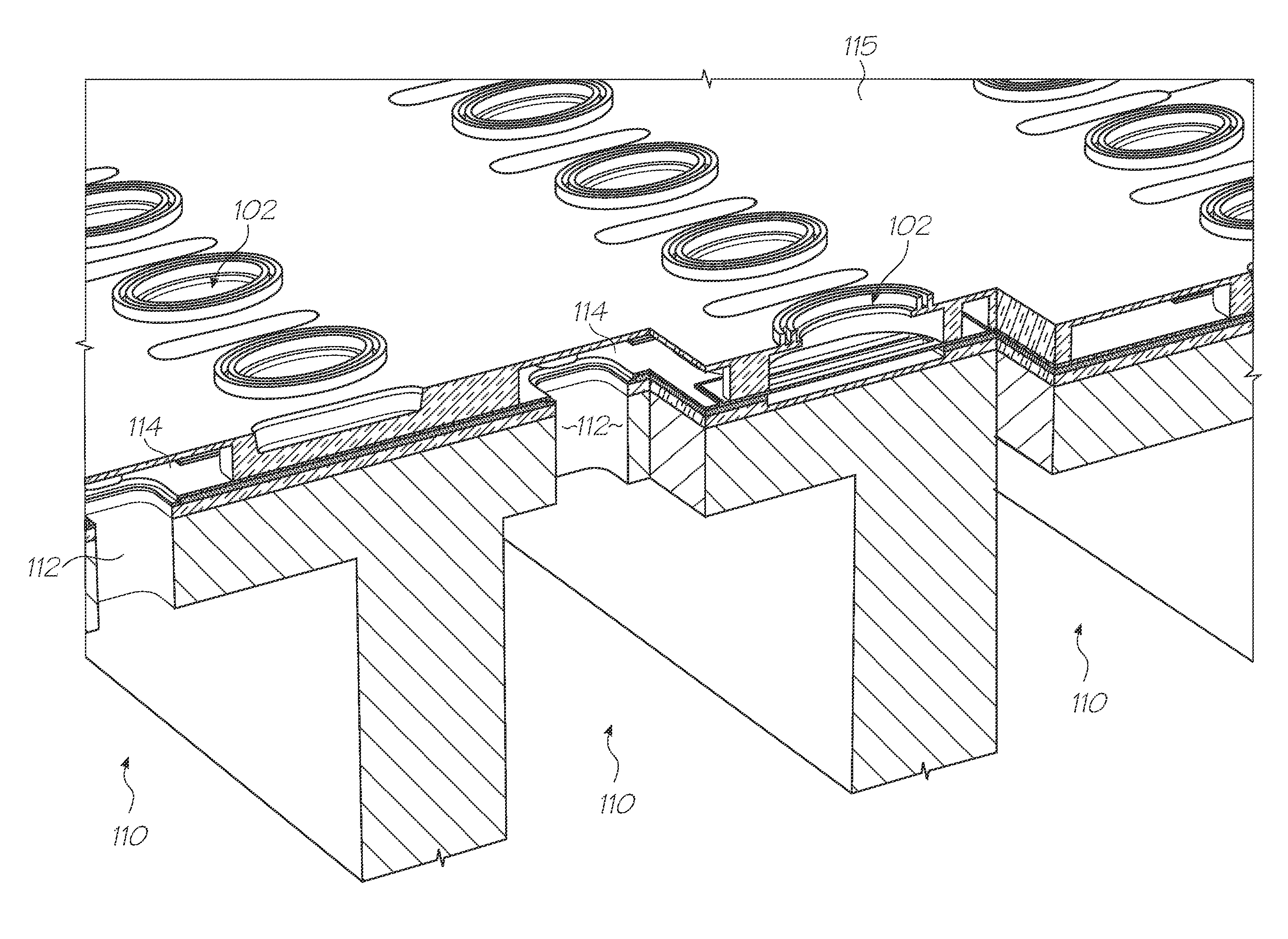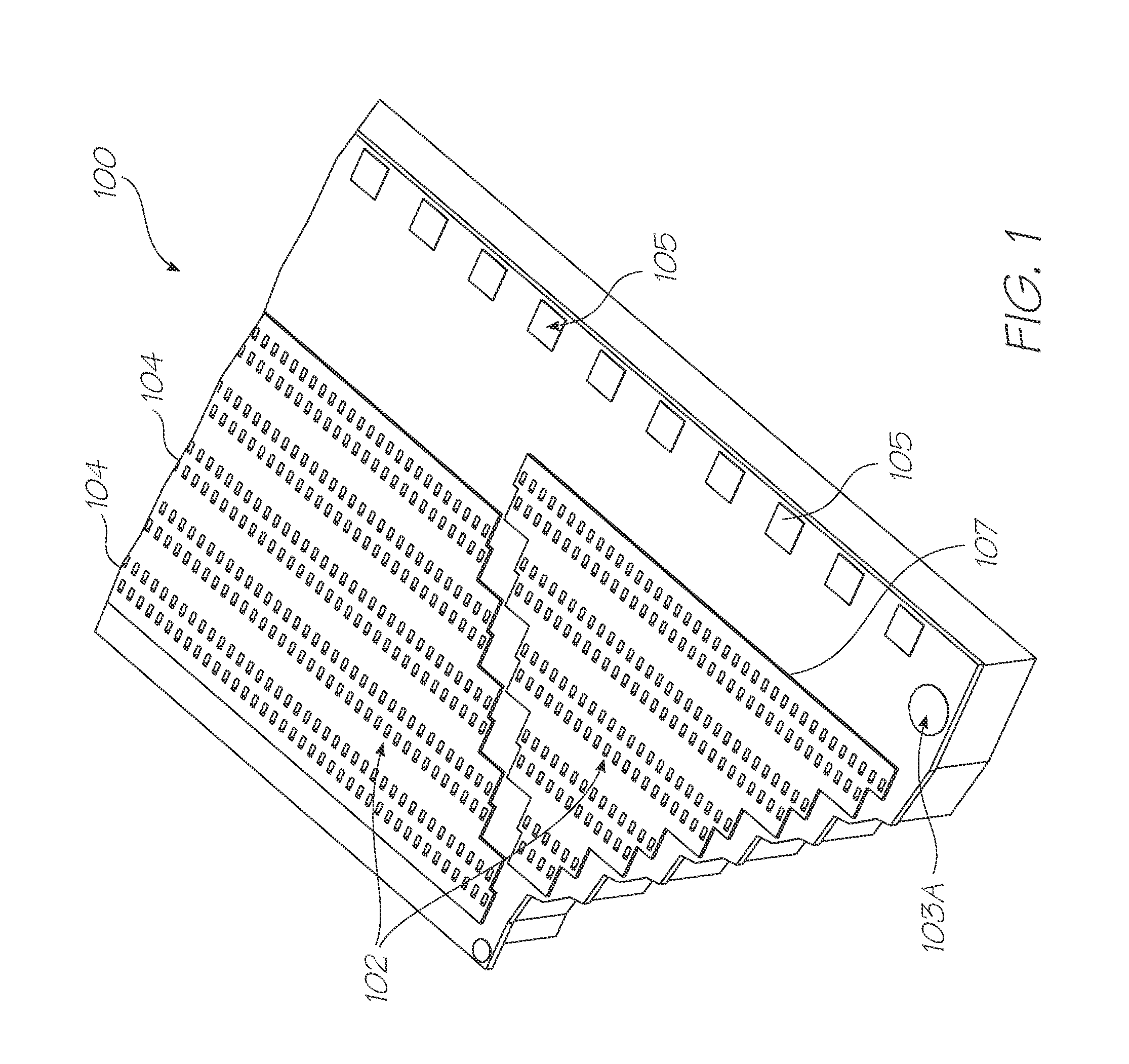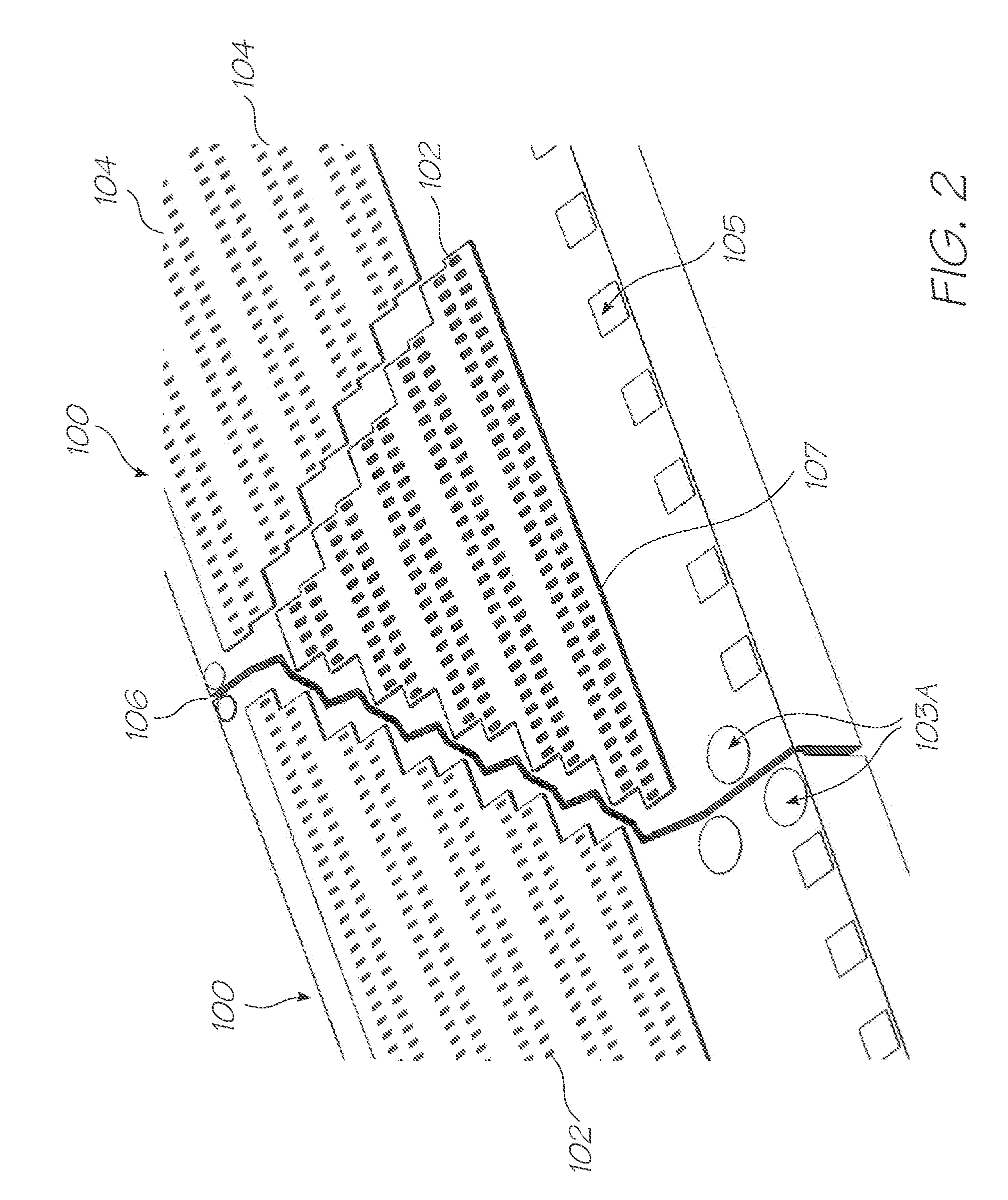Method for hydrophilizing surfaces of ink pathway
- Summary
- Abstract
- Description
- Claims
- Application Information
AI Technical Summary
Benefits of technology
Problems solved by technology
Method used
Image
Examples
first embodiment
for Treating Ink Pathways
[0136]FIG. 17 is a flow chart illustrating the steps of a first embodiment of the hydrophilizing method of the present invention.
[0137]A newly fabricated printhead assembly is first subjected to a plasma activation process (S2-1). In the first embodiment, an O2 plasma is used. The O2 plasma activation process is performed with the printhead assembly at atmospheric pressure.
[0138]An atmospheric plasma generating tool (such as those available from Surfx Technologies LLC) is preferably utilized as the plasma source, allowing the printhead assembly to be maintained in an environment at or close to atmospheric pressure. Alternatively, an arrangement utilizing corona discharge directed at the printhead assembly may be used.
[0139]Following the plasma activation process (S2-1), the activated printhead assembly is packaged into a print cartridge assembly, whereupon it is primed with ink and the print cartridge assembly subjected to a print quality and electrical test...
second embodiment
for Treating Ink Pathways
[0160]FIG. 18 is a flow chart illustrating the steps of a second embodiment of the hydrophilizing method of the present invention.
[0161]In the second embodiment, a newly fabricated printhead assembly is first subjected to a plasma activation process (S3-1). Similar to the first embodiment, an O2 plasma is used. The plasma activation process (S3-1) is performed with the printhead assembly at atmospheric pressure.
[0162]An atmospheric plasma generating tool is preferably utilized as the plasma source. Alternatively, an arrangement utilizing corona discharge directed at the printhead assembly may be used.
[0163]Following activation of the printhead assembly, (S3-1) a decontamination process (S3-2) is performed. The decontamination process (S3-2) flushes a cleaning fluid through the printhead assembly 130.
[0164]Acceptable cleaning fluids include Surfynol® in deionized water, aqueous glycols and alcohols, other surfactants in deionized water, or a combination of su...
third embodiment
for Treating Ink Pathways
[0177]FIG. 19 is a flow chart illustrating a third embodiment of the hydrophilizing method of the present invention.
[0178]In the third embodiment, a printhead assembly is subjected first to a decontamination process (S4-1). The decontamination process (S4-1) reverse flushes a cleaning fluid through the printhead assembly. A reverse flush is performed for reasons as described above in the second embodiment.
[0179]It is particularly important in the third embodiment to have no residues left on the internal surfaces of the printhead assembly after the decontamination process (S4-1), since a later step of plasma activation in the third embodiment will by default activate any material the plasma comes into contact with, no matter what this material is, including surfactant residues left behind by the cleaning fluids. The internal surfaces of the assembly should also be completely dried before plasma activation, since residual water, or any fluid, would mask the su...
PUM
| Property | Measurement | Unit |
|---|---|---|
| Temperature | aaaaa | aaaaa |
| Fraction | aaaaa | aaaaa |
| Fraction | aaaaa | aaaaa |
Abstract
Description
Claims
Application Information
 Login to View More
Login to View More - R&D
- Intellectual Property
- Life Sciences
- Materials
- Tech Scout
- Unparalleled Data Quality
- Higher Quality Content
- 60% Fewer Hallucinations
Browse by: Latest US Patents, China's latest patents, Technical Efficacy Thesaurus, Application Domain, Technology Topic, Popular Technical Reports.
© 2025 PatSnap. All rights reserved.Legal|Privacy policy|Modern Slavery Act Transparency Statement|Sitemap|About US| Contact US: help@patsnap.com



